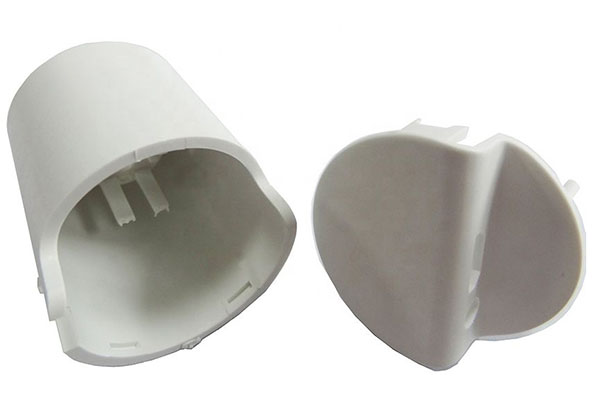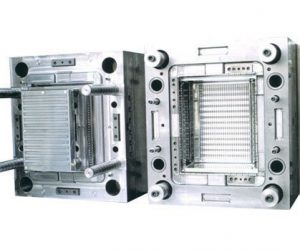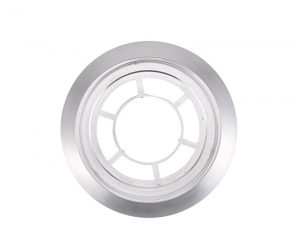1. The Mechanics of Thread Milling: Beyond Traditional Methods
1.1 Core Principles of Thread Milling
Thread milling stands out as a sophisticated and precise machining process that has revolutionized the creation of threads in various industries. At its core, thread milling employs rotating multi - tooth cutters to generate helical threads. This is achieved through interpolated circular paths, a departure from more traditional single - point cutting methods like turning or the linear motion utilized in tapping.
The process begins with the carefully controlled rotation of the multi - tooth cutter. As the cutter spins, it moves in a circular interpolation around the workpiece. This circular motion, combined with the helical advancement along the axis of the thread, allows for the gradual and precise removal of material to form the thread.
One of the most significant advantages of thread milling is the enhanced geometry control it offers. The helical interpolation ensures that the thread profiles are uniform. Each tooth on the cutter contributes to the material removal in a coordinated manner, resulting in a consistent thread shape. In contrast, traditional single - point cutting in turning may be more prone to variations due to the continuous pressure applied by a single cutting edge. For instance, when machining a high - precision aerospace component, the ability to maintain a uniform thread profile is crucial for the component's performance and reliability.
Another advantage lies in the reduced cutting forces. With multiple teeth on the cutter, the load is distributed across these teeth. This distribution minimizes the wear on any single tooth, leading to longer tool life. In a tapping operation, the linear motion and the single - point contact can subject the tap to high stress concentrations, often resulting in premature tool failure. A study in the automotive industry found that thread milling tools lasted up to 30% longer than tapping tools when machining aluminum engine blocks.
Thread milling also provides remarkable flexibility when it comes to producing right - hand and left - hand threads. A single tool can be used to create both thread directions. This versatility eliminates the need for separate tools for each thread direction, reducing tool inventory costs and setup times. For Yigu Technology example, in the production of hydraulic fittings, where both right - hand and left - hand threads are commonly required, thread milling allows for quick and efficient switching between the two thread types.
The precision achievable with thread milling is truly remarkable. A 2025 aerospace study found that thread milling achieved ±0.002mm pitch accuracy on Inconel 718 components. This level of accuracy far surpasses the ±0.01mm tolerance typically achievable with tapping. The tight pitch accuracy is essential in aerospace applications, where even the slightest deviation in thread pitch can lead to catastrophic failures. The ability to produce threads with such high precision makes thread milling the preferred choice for industries with stringent requirements.
In summary, the core principles of thread milling - circular interpolation, multi - tooth cutters, and helical advancement - offer a host of benefits over traditional methods. These benefits include enhanced geometry control, reduced cutting forces, thread direction flexibility, and exceptional precision, making thread milling a game - changer in the world of precision thread production.
3. Thread Milling vs. Conventional Threading: A Comparative Analysis
When it comes to creating threads, the choice between thread milling and conventional threading methods is a crucial decision that can significantly impact the quality, efficiency, and cost - effectiveness of a manufacturing process. By examining key parameters such as tolerance, surface finish, material removal rate, tool breakage risk, and complexity handling, we can gain a comprehensive understanding of the differences between thread milling and traditional techniques like tapping and thread turning.
3.1 Tolerance
Tolerance is a critical factor in precision machining, and thread milling offers a distinct advantage in this regard. Thread milling can achieve a tolerance range of ±0.002mm - ±0.005mm. This high level of precision is due to the multi - tooth cutters and the interpolated circular motion, which allows for fine - tuned material removal.
In contrast, tapping typically has a tolerance range of ±0.01mm - ±0.02mm. The linear motion of the tap and the single - point contact with the workpiece make it more challenging to achieve the same level of accuracy as thread milling. For Yigu Technology example, in the production of medical implants, where tight tolerances are essential for proper functionality and patient safety, thread milling is often the preferred method.
Thread turning also falls short in comparison, with a tolerance range of ±0.005mm - ±0.01mm. Although it can achieve relatively tight tolerances, the continuous pressure of the single - point cutting tool can introduce more variability, especially when machining complex or high - precision parts.
3.2 Surface Finish
The surface finish of a thread is not only important for aesthetics but also for the performance and durability of the threaded component. Thread milling produces an excellent surface finish, with a roughness average (Ra) of 0.4 - 1.2μm. The coordinated action of the multi - tooth cutter and the smooth helical motion result in a finely machined surface.
Tapping, on the other hand, typically yields a surface finish with an Ra of 1.6 - 3.2μm. The single - point cutting action and the relatively high forces involved in tapping can leave behind a rougher surface. In applications where the threaded components need to resist corrosion or where a tight seal is required, a better surface finish provided by thread milling can be a significant advantage.
Thread turning offers a surface finish in the range of 0.8 - 2.0μm. While it can produce a smoother surface than tapping in some cases, it still cannot match the quality achieved by thread milling. For instance, in the aerospace industry, where components are exposed to extreme conditions, the superior surface finish of thread - milled threads can enhance the fatigue resistance and overall lifespan of the parts.
3.3 Material Removal Rate
The material removal rate is a key factor in determining the productivity of a machining process. Thread milling has a relatively high material removal rate, ranging from 80 - 150 cm³/min. The multi - tooth cutters and the ability to use higher cutting speeds contribute to this efficient material removal.
Tapping has a lower material removal rate, typically 30 - 70 cm³/min. The single - point cutting and the need to reverse the tap's rotation for each pass limit the speed at which material can be removed. In high - volume production environments, the lower material removal rate of tapping can lead to longer production times and higher costs.
Thread turning has a material removal rate of 50 - 100 cm³/min. Although it can remove material at a reasonable rate, it is still outperformed by thread milling. For example, when machining large - diameter threads in a production setting, thread milling can significantly reduce the machining time compared to thread turning or tapping.
3.4 Tool Breakage Risk
Tool breakage is a costly issue in machining, as it can lead to production delays, increased tooling costs, and potential damage to the workpiece. Thread milling has a low tool breakage risk due to the distributed load across multiple teeth. If one tooth encounters an unexpected hard spot or a slight variation in the workpiece material, the other teeth can continue to support the cutting operation, reducing the likelihood of tool failure.
Tapping, however, has a high tool breakage risk. The single - point contact and the high forces concentrated on the tap can cause it to break easily, especially when machining hard or difficult - to - machine materials. In a study of machining operations in the automotive parts manufacturing, it was found that tap breakage occurred in approximately 5% of tapping operations, leading to significant production losses.
Thread turning has a moderate tool breakage risk. While the single - point cutting tool is more robust than a tap in some ways, it is still subject to wear and breakage, especially when dealing with high - speed machining or complex thread geometries.
3.5 Complexity Handling
Thread milling offers remarkable flexibility in handling different thread complexities. It can be used to produce both internal and external threads with ease. The ability to program the interpolated circular motion allows for the creation of threads with various pitches, diameters, and lead angles.
Tapping is mainly suitable for internal threads. Producing external threads with taps can be challenging and often requires specialized equipment. Additionally, the process of tapping internal threads can be more difficult when dealing with blind holes or threads in hard - to - reach areas.
Thread turning is typically used for external threads. Machining internal threads with turning can be complex and may require special tooling and setups. For example, in the production of hydraulic fittings, which often require both internal and external threads, thread milling can handle the entire threading process without the need to switch between different machining methods or tools for different thread types.
In summary, the comparison between thread milling and conventional threading methods clearly shows that thread milling offers superior performance in terms of tolerance, surface finish, material removal rate, tool breakage risk, and complexity handling. These advantages make thread milling an ideal choice for industries that demand high - precision, high - quality threaded components. The following Yigu Technology table provides a quick overview of the comparison:
| Parameter | Thread Milling | Tapping | Thread Turning |
| Tolerance Range | ±0.002mm–±0.005mm | ±0.01mm–±0.02mm | ±0.005mm–±0.01mm |
| Surface Finish (Ra) | 0.4–1.2μm | 1.6–3.2μm | 0.8–2.0μm |
| Material Removal Rate | 80–150 cm³/min | 30–70 cm³/min | 50–100 cm³/min |
| Tool Breakage Risk | Low (distributed load) | High (single-point) | Moderate |
| Complexity Handling | Internal/external threads | Internal only | External only |
4. Case Studies: Thread Milling in Action
Real - world applications often provide the most compelling evidence of the effectiveness of a technology. In the case of thread milling, its advantages are vividly demonstrated through case studies in various industries. Here, we will explore two in - depth examples from the automotive and aerospace sectors.
4.1 Automotive Transmission Components
In the automotive industry, the production of transmission components requires high - precision machining to ensure smooth power transfer and long - lasting performance. General Motors (GM) conducted a study on the use of thread milling in the production of hardened steel gears for their transmissions.
The results were remarkable. First, thread milling significantly reduced the cycle time. The process was 45% faster than traditional tapping methods. This speed increase was mainly due to the high - speed rotation and efficient material removal of the multi - tooth thread milling cutters. In a high - volume production environment, such as an automotive manufacturing plant, where thousands of parts are produced daily, this reduction in cycle time can lead to substantial increases in overall production capacity.
Secondly, thread integrity was greatly improved. In high - torque applications like automotive transmissions, the risk of thread stripping is a major concern. Traditional tapping methods sometimes led to thread stripping issues, which could cause premature failure of the transmission. However, thread milling eliminated these problems. The precise and uniform thread profiles produced by thread milling could better withstand the high - torque forces, ensuring the reliability and durability of the transmission components.
Cost savings were also a significant outcome. GM estimated that they saved $0.15 per part. This cost reduction was primarily attributed to the reduced need for tool replacement. Thread milling tools have a longer lifespan compared to taps, as the load is distributed across multiple teeth. With fewer tool replacements, not only were the direct costs of purchasing new tools reduced, but also the indirect costs associated with machine downtime for tool changes were minimized.
4.2 Aerospace Fastener Production
The aerospace industry has some of the most stringent requirements for component quality and performance. Boeing, a leading aerospace company, achieved outstanding results when they implemented thread milling in the production of critical titanium alloy fasteners.
One of the most impressive achievements was the 99.9% first - pass yield. This high yield rate was a testament to the precision and reliability of thread milling. In aerospace manufacturing, where the cost of rework or scrapping a part can be extremely high, achieving such a high first - pass yield is crucial for cost - effectiveness and production efficiency.
Yigu Technology Thread milling also helped in retaining surface hardness. The surface hardness of the thread - milled fasteners was 30% higher than that of rolled threads. Titanio alloys are known for their high strength - to - weight ratio, but they can be challenging to machine without sacrificing material properties. Thread milling was able to maintain and even enhance the surface hardness, which is essential for the fasteners' ability to resist wear and fatigue in the harsh aerospace environment.
Weight reduction is a constant pursuit in aerospace design, as every ounce saved can improve fuel efficiency and overall aircraft performance. Boeing achieved a 12% weight reduction in the fasteners through optimized thread root radii. The precise control over the thread geometry provided by thread milling allowed for the creation of more efficient thread designs, reducing the amount of material needed without sacrificing strength.
These case studies clearly demonstrate the real - world benefits of thread milling. Whether it's improving production efficiency in the automotive industry or meeting the high - performance requirements of the aerospace sector, Yigu Technology thread milling has proven to be a valuable and reliable machining process.
FAQ
1. What are the optimal tool geometries for thread milling different materials?
Carbide end mills with TiAlN coatings and 30° helix angles balance chip evacuation and edge strength for optimal performance.
2. Can thread milling be used for large - diameter threads?
Yes. Indexable insert tools allow milling diameters up to 150mm, with modular setups providing flexibility for different sizes.
3. When should I choose thread milling over thread rolling?
While thread rolling offers faster production for low - hardness materials, milling produces stronger threads on hardened steels (HRC >35) and maintains tighter tolerances for critical applications.


